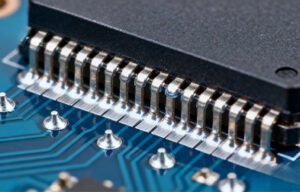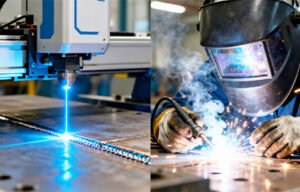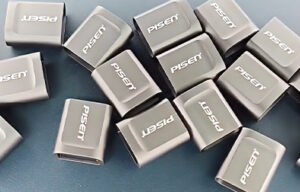Best Laser Welding Machines for Automotive Parts – Choose the Right Solution for Car Component Welding
Best Laser Welding Machines for Automotive Parts
Introduction
In the competitive world of automotive manufacturing, precision, strength, and speed are critical. As vehicle technology evolves—especially with the rise of electric vehicles—the demand for advanced welding solutions has increased. Laser welding has become a top choice for manufacturers looking to deliver high-quality, consistent welds for a wide range of car components.
But which laser welding machine is best for automotive parts? This guide explores the different types of laser welders, their applications, and how to choose the most suitable model based on your production needs.
Why Laser Welding Is Crucial in Automotive Manufacturing
Automotive production requires joining various metals with minimal deformation and maximum strength. Traditional welding methods such as arc or MIG welding often fall short, especially with thin or complex metal parts.
Laser welding offers:
Minimal heat-affected zones
High welding speeds
Clean, spatter-free seams
Excellent automation compatibility
This makes it an ideal solution for mass production in the auto industry.
Key Requirements for Welding Automotive Parts
Before choosing a welding machine, manufacturers must consider:
Material types (steel, aluminum, copper, etc.)
Welding thickness (often from 0.5mm to 6mm)
Joint geometry (butt, lap, fillet)
Welding speed and accuracy
Production scale (small workshop vs automated line)
Understanding these factors is essential in selecting the right equipment.
Types of Laser Welding Machines for Automotive Parts
Fiber Laser Welding Machine
Fiber laser welders are widely used in automotive manufacturing due to their:
High beam quality
Fast welding speed
Compatibility with metals like aluminum, stainless steel, copper
Long service life and low maintenance
Ideal for automated and robotic welding systems, fiber lasers are the industry standard for body panels, battery modules, and chassis components.
Handheld Laser Welding Machine
Handheld models are flexible, portable, and great for:
On-site repair jobs
Welding non-standard shapes
Low-to-medium production volumes
However, they are less suitable for precision or fully automated production lines.
Robotic Laser Welding System
These systems combine industrial robots with fiber laser sources for:
Fully automated welding lines
High repeatability and precision
24/7 mass production
Used in large-scale factories for welding doors, frames, and EV batteries.
3-in-1 Laser Welding Machines
Integrated welding, cleaning, and cutting in one unit. Best for:
Workshop flexibility
Small-to-medium enterprises
Multiple applications with one system
They offer high ROI for businesses handling varied tasks.
Best Laser Welding Machine Options for Specific Auto Parts
Battery Pack and EV Components
Recommended: Fiber laser or robotic welding system
Reasons: Precision welding of copper, nickel, and aluminum parts in confined battery assemblies
Car Doors and Panels
Recommended: Robotic fiber laser system
Reasons: Uniform seams, high-speed processing, automation-ready
Exhaust Systems and Heat Shields
Recommended: Fiber laser with high-penetration power
Reasons: Excellent for stainless steel, complex geometries
Engine Components and Sensors
Recommended: Precision fiber laser systems
Reasons: Clean welds for thermal sensors, manifolds, fuel injection systems
Aluminum Frames and Structural Parts
Recommended: Fiber laser with wobble welding capability
Reasons: Handles reflectivity and avoids cracks in aluminum alloy structures
Material Compatibility in Automotive Laser Welding
Different materials have different challenges. For example:
Aluminum: Reflective, requires high power and pulse modulation
Stainless Steel: Easy to weld but sensitive to heat distortion
Copper: High thermal conductivity, needs precise control
Galvanized Steel: Zinc fumes require fume extraction systems
Matching the machine to the material is essential for quality results.
Advantages of Using Laser Welding for Automotive Components
High Strength: Deeper penetration ensures stronger joints
Accuracy: Spot size control down to microns
Automation: Perfect for robotic arms and PLC integration
Speed: Faster than MIG/TIG with minimal finishing
Environmentally Friendly: Low noise, low pollution, energy-saving
Technical Parameters to Consider
When purchasing a laser welding machine for automotive parts, look for:
Laser Power: 1000W to 6000W depending on material and thickness
Beam Quality (M²): Lower is better for precise welding
Cooling Method: Water cooling is more stable for high-duty cycles
Control Interface: Smart HMI, programmable settings
Safety Features: Enclosures, sensors, laser protection standards (CE, FDA)
Real Case Studies from Automotive Industry
Case 1: European EV Manufacturer
Integrated robotic fiber laser systems to weld battery trays and housing. Achieved 30% faster production speed and 20% fewer welding defects.
Case 2: Southeast Asia Car Frame Manufacturer
Adopted 3-in-1 laser machine for frame repair, welding, and cleaning. Improved operational efficiency by 40% with lower downtime.
Case 3: OEM Auto Exhaust Supplier
Replaced TIG welding with high-power fiber laser welder. Resulted in better sealing quality and reduced rework rate.
How to Choose the Right Laser Welding Machine for Your Business
Define Your Application: Know what parts you will weld and the materials involved.
Evaluate Production Volume: For large-scale operations, consider robotic systems; for smaller setups, handheld or 3-in-1 may suffice.
Consider Automation Needs: Automation increases efficiency, but requires higher investment.
Assess Budget vs ROI: Fiber laser machines have higher upfront costs but better long-term value.
Check Technical Support & Training: Choose a supplier who offers post-sales support and on-site training.
Future Trends in Automotive Laser Welding
EV-Specific Welding Solutions
Smart Welding with AI-Based Controls
Real-Time Quality Monitoring
Green Laser Development for Copper
Collaborative Welding Robots (Cobots)
Laser welding is becoming more intelligent, efficient, and integral to the automotive future.
Conclusion
Choosing the right laser welding machine for automotive parts involves understanding your specific application, material requirements, and production goals. Whether you are a small workshop or a high-volume manufacturer, investing in the right equipment ensures consistent quality, operational efficiency, and a competitive edge in the automotive market.
Partner with an experienced supplier like JOYLASER to access tailored solutions for automotive welding needs.
111-1024x458.png)


